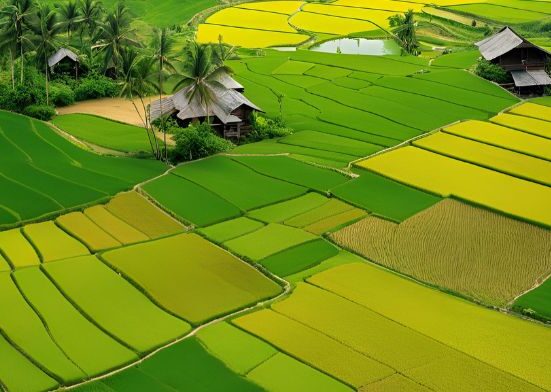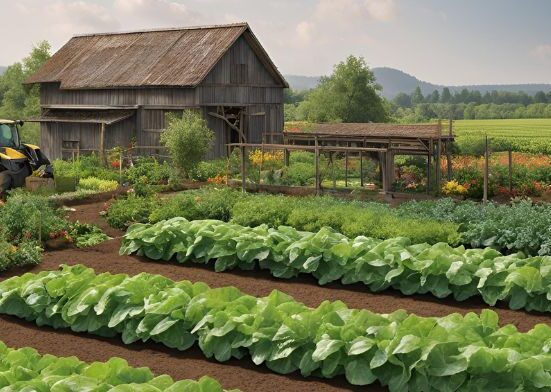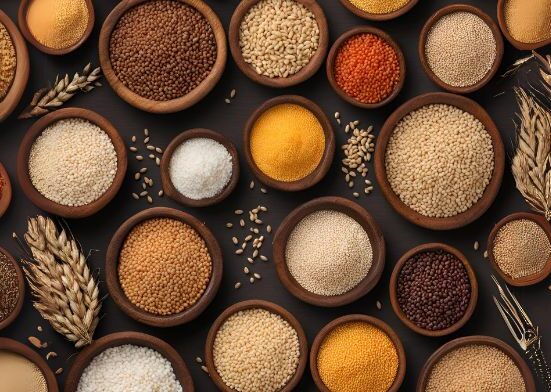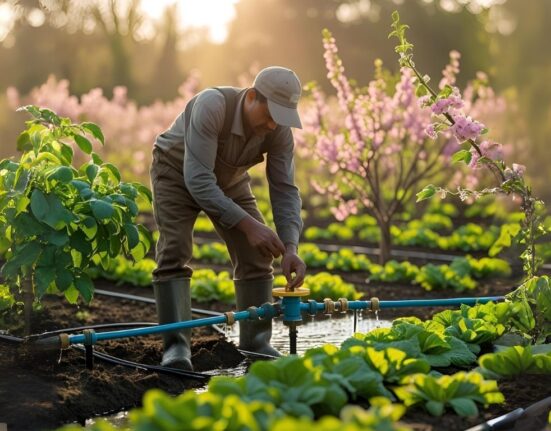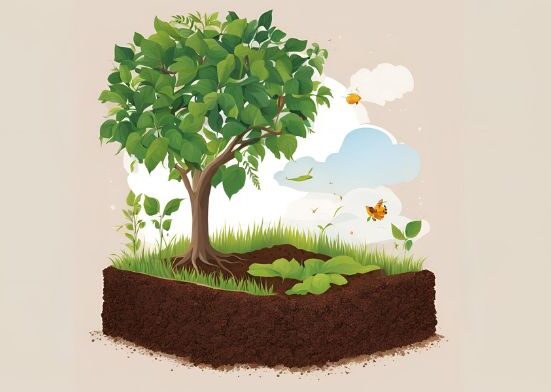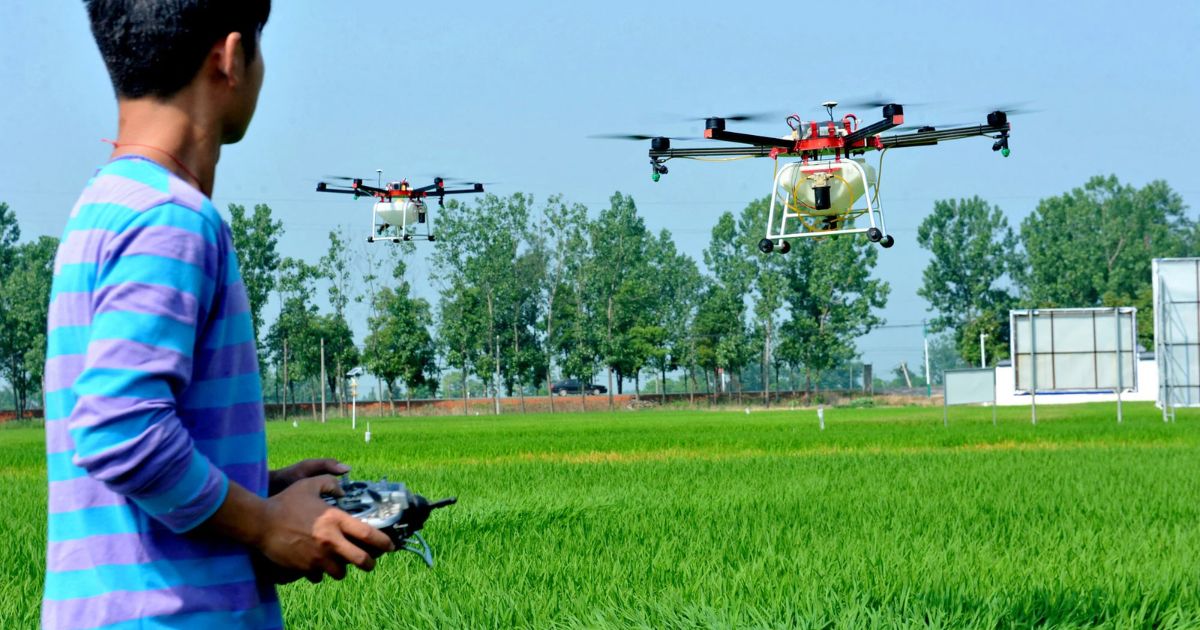Agriculture has been the backbone of human civilization for centuries, evolving with technological advancements to improve productivity and efficiency. One of the most transformative innovations in recent years is drone technology. Also known as Unmanned Aerial Vehicles (UAVs), drones are revolutionizing agriculture by providing farmers with new tools to enhance productivity, reduce labor costs, and optimize resource management. This article explores how drones reshape modern agriculture and why they are considered a game-changer for the industry.
The Role of Drone Technology in Agriculture
Drone technology is revolutionizing modern agriculture by enhancing efficiency, productivity, and sustainability. These uncrewed aerial vehicles (UAVs) assist farmers with crop monitoring, precision farming, and resource management. Drones with advanced sensors and imaging capabilities give farmers real-time information on crop health, soil conditions, and irrigation needs, empowering them to make informed decisions. Drones also play a vital role in precision agriculture by enabling targeted pesticide and fertilizer application, reducing waste and environmental impact. They help detect pest infestations and plant diseases early, leading to timely interventions and improved Agricultural drones yields.
Additionally, drones assist in field mapping, livestock monitoring, and assessing damage from natural disasters, making farming more resilient. Drone technology transforms traditional farming practices by reducing labor costs and increasing operational efficiency. As advancements continue, drones will become an indispensable tool for sustainable, technology-driven agriculture, ensuring food security for the future.
Precision Agriculture
A farming method called precision agriculture uses technology to maximize agricultural yields and minimize waste. Drones play a crucial role in precision farming by capturing data on soil health, crop conditions, and plant growth. Using this information, farmers may apply water, herbicides, and fertilizers more effectively, saving money and lessening their environmental Precision agriculture drone influence.
Crop Monitoring and Health Assessment
Traditional crop monitoring methods require significant time and labor. Drones, equipped with high-resolution cameras and multispectral sensors, can scan large areas in a fraction of the time. They detect plant diseases, nutrient deficiencies, and water stress early, allowing farmers to take corrective action before issues escalate. This proactive approach improves crop health and maximizes Smart farming drones yields.
Irrigation Management
Water is a critical resource in agriculture, and its efficient use is essential for sustainable farming. Drones with thermal imaging sensors can identify areas experiencing water stress, helping farmers optimize irrigation systems. This ensures crops receive adequate water while conserving resources and reducing water Drone sprayers wastage.
Pest and Weed Control
Pests and weeds can cause significant crop losses if not managed properly. Drones equipped with spraying systems can apply pesticides and herbicides precisely, reducing chemical usage and minimizing environmental harm. Targeted spraying also lowers labor costs and enhances Organic farming methods overall farm Crop monitoring drones productivity.
Livestock Monitoring
Drones are also proving beneficial in livestock management. Farmers can use drones to monitor herd movement, check animal health, and detect irregularities. This is particularly useful for large farms, where manually tracking livestock is time-consuming and Drone imaging technology labor-intensive.
Evolution of Drone Technology in Agriculture
 Using drones in agriculture has evolved significantly, transforming traditional farming methods. Initially, drones were primarily used for aerial imaging and surveying fields. Over time, technological advancements have enabled drones to perform more complex tasks such as precision spraying, automated planting, and real-time crop monitoring. With high-resolution cameras, multispectral sensors, and AI-driven analytics, modern agricultural drones provide farmers with detailed insights into crop health, soil conditions, and irrigation needs. These innovations have improved efficiency, reduced costs, and minimized environmental impact by optimizing resource usage.
Using drones in agriculture has evolved significantly, transforming traditional farming methods. Initially, drones were primarily used for aerial imaging and surveying fields. Over time, technological advancements have enabled drones to perform more complex tasks such as precision spraying, automated planting, and real-time crop monitoring. With high-resolution cameras, multispectral sensors, and AI-driven analytics, modern agricultural drones provide farmers with detailed insights into crop health, soil conditions, and irrigation needs. These innovations have improved efficiency, reduced costs, and minimized environmental impact by optimizing resource usage.
Furthermore, swarms of autonomous drones are being created to carry out extensive farming operations with little assistance from humans. Through Funding programs and regulatory assistance, governments and agricultural groups encourage the use of drones. As artificial intelligence and machine learning continue to advance, the future of drone technology in agriculture promises even greater precision, sustainability, and productivity, making farming more innovative and more resilient to global AI-powered farming drones challenges.
Advantages of Using Drones in Agriculture
Drones have revolutionized modern agriculture by enhancing efficiency, precision, and sustainability. These aerial devices help farmers monitor crops, assess soil health, and optimize resource use. With high-resolution cameras and sensors, drones provide real-time data on plant health, irrigation needs, and pest infestations, allowing for targeted interventions that reduce waste and increase LiDAR drones for agriculture yields.
Drones also enable precision spraying of fertilizers and pesticides, minimizing chemical usage and environmental impact. Their ability to cover large areas quickly saves time and labor costs while ensuring uniform application. Additionally, drones assist in livestock monitoring, mapping fields, and predicting weather patterns, contributing to better farm Crop health monitoring management. By reducing manual labor, improving decision-making, and enhancing productivity, drones help farmers maximize profits while promoting sustainable farming practices. As technology advances, drones will continue to play a vital role in transforming agriculture, making it more efficient, cost-effective, and environmentally friendly.
Cost Reduction
Drones reduce the need for manual labor, lowering operational costs. They also help minimize the overuse of fertilizers, pesticides, and water, leading to further cost savings. With drones, farmers can cover large areas quickly and collect valuable data to optimize farming Aerial crop scouting practices. This leads to increased productivity and better decision-making.
Environmental Sustainability
Drones enable precise application of agricultural inputs, reducing chemical runoff and water wastage. This promotes environmentally friendly farming practices and helps what is transpiration in agriculture preserve natural Drone irrigation systems resources.
Data-Driven Decision Making
Drones provide real-time, accurate data that allows farmers to make informed decisions. This reduces guesswork and enhances farm management Autonomous farming UAVs strategies. Drones eliminate the need for farmers to perform dangerous tasks, such as manually spraying pesticides in hazardous conditions. This enhances worker safety and reduces health Unmanned aerial vehicles in farming risks.
Benefits of Drone Technology in Agriculture
 Drone technology in agriculture offers numerous benefits that are transforming modern farming practices. Drones allow farmers to monitor crops, assess plant health, and collect data with high precision. This enables early detection of pest infestations, diseases, or nutrient deficiencies, allowing timely interventions. Additionally, drones can assist in precise irrigation, minimizing water waste and improving efficiency. They also enhance crop yield predictions by providing aerial imagery and real-time data analytics. Drone technology increases productivity, reduces costs, and promotes sustainable agricultural practices by offering valuable insights and automation capabilities.
Drone technology in agriculture offers numerous benefits that are transforming modern farming practices. Drones allow farmers to monitor crops, assess plant health, and collect data with high precision. This enables early detection of pest infestations, diseases, or nutrient deficiencies, allowing timely interventions. Additionally, drones can assist in precise irrigation, minimizing water waste and improving efficiency. They also enhance crop yield predictions by providing aerial imagery and real-time data analytics. Drone technology increases productivity, reduces costs, and promotes sustainable agricultural practices by offering valuable insights and automation capabilities.
Increased Efficiency and Productivity
Drones have revolutionized farming by enabling quick and precise monitoring of large agricultural fields. By covering vast areas quickly, drones allow farmers to assess crop health, detect pest infestations, and monitor irrigation needs efficiently. This technology reduces manual labor while improving overall farm productivity.
Cost Reduction in Labor and Resources
The Drones automate these jobs, lowering labor expenses and minimizing the overuse of pesticides and fertilizers. is in releases profitability by ensuring efficient resource usage and saving money. Sustainable and Environmentally Friendly Farming
Drones contribute to sustainable agriculture by enabling precise fertilizer and pesticide application, reducing chemical runoff into the environment. Their ability to monitor crop health and detect diseases early minimizes the need for excessive chemical treatments. Additionally, drones reduce fuel consumption associated with traditional farming machinery, lowering carbon emissions.
Real-Time Data Collection and Analysis for Better Decision-Making
Drones equipped with advanced sensors and imaging technology provide farmers with real-time data on crop conditions, soil health, and weather patterns. This data allows for informed decision-making decision-making, helping farmers optimize planting schedules, improve irrigation management, and enhance farm operations. By leveraging accurate insights, farmers can increase yields while minimizing risks and resource wastage.
Challenges and Limitations
 Every endeavor comes with challenges and limitations, hindering progress and requiring strategic solutions. One significant challenge is resource constraints, including limited Funding, workforce, or technology, which can slow down operations. Unpredictable barriers can also be pr duced by unanticipated outside variables like market swings, legislative modifications, or recessions.
Every endeavor comes with challenges and limitations, hindering progress and requiring strategic solutions. One significant challenge is resource constraints, including limited Funding, workforce, or technology, which can slow down operations. Unpredictable barriers can also be pr duced by unanticipated outside variables like market swings, legislative modifications, or recessions.
Another major limitation is resistance to change, especially in organizations with deeply ingrained traditional methods. Implementing new ideas or technologies often creates skepticism and requires time for adaptation. Furthermore, knowledge gaps and skill shortages can limit the effectiveness of teams, requiring continuous learning and development. Time constraints also play a crucial role, as deadlines and pressure can lead to rushed decisions or lower-quality outcomes. Lastly, ethical and environmental concerns can pose challenges, necessitating careful planning to ensure sustainable and responsible practices. Overcoming these limitations requires resilience, adaptability, and innovative problem-solving.
High Initial Costs
Although drones offer long-term savings, the initial investment in drone technology can be expensive. Small-scale farmers may find it challenging to afford advanced UAV systems.
Many countries have strict drone usage regulations, including flight restrictions and licensing requirements. Farmers must comply with these regulations, which can sometimes be complex and time-consuming.
Technical Expertise
Operating drones and interpreting data require specialized skills. Farmers must either undergo training or hire professionals to utilize drone technology effectively.Drones are affected by weather conditions such as strong winds, rain, and extreme temperatures. This can limit their usability in specific environments.
The Future of Drones in Agriculture
Drones are revolutionizing modern agriculture, offering farmers innovative solutions for precision farming, crop monitoring, and resource management. With advanced sensors and AI-powered analytics, drones can assess crop health, detect diseases, and optimize irrigation with real-time data. This technology enhances efficiency, reduces CSTS, and minimizes environmental impact by enabling targeted pesticide and fertilizer applications.
In the future, autonomous drones will play a crucial role in large-scale farming, performing tasks such as planting seeds, spraying crops, and collecting soil data with minimal human intervention. Integrating AI and IoT will refine predictive analytics, allowing farmers to make data-driven decisions that boost yields and sustainability.
As regulations evolve and technology advances, drones will become indispensable tools in precision agriculture, ensuring food security and environmental conservation. With ongoing innovations, drone technology will reshape global farming, making it more efficient, productive, and eco-friendly.
AI-Powered Drones
Artificial intelligence makes drones smarter, enabling them to analyze data autonomously and provide actionable insights without human intervention. Drones are integrated into automated farming systems, working alongside robotics and IoT devices to create fully autonomous farms.
Advanced Sensor Technology
Future drones will be equipped with more advanced sensors capable of detecting even the slightest changes in crop health, soil conditions, and environmental factors. As technology becomes more affordable, drone usage is expected to expand to small-scale farmers, democratizing access to precision agriculture tools.
Key Applications of Drones in Agriculture
Drones have revolutionized agriculture by offering innovative solutions to improve efficiency, productivity, and sustainability. One key application is crop monitoring; drones equipped with multispectral cameras can capture high-resolution images, providing farmers with real-time insights into crop health, pest infestations, and water stress. This helps in early detection and targeted intervention. Precision agriculture is another significant application, where drones help in accurate irrigation and fertilization by creating detailed maps of soil health and moisture levels. This reduces resource wastage and enhances your DS.
Drones also play a vital role in field mapping, creating 3D models and maps that assist farmers in better planning and managing their land. Additionally, spraying drones enable the application of pesticides, herbicides, and fertilizers with high precision, reducing human labor and chemical usage. By collecting data and providing valuable insights, drones enable farmers to make informed decisions and enhance productivity while minimizing environmental impact.
Precision Agriculture
Precision agriculture uses advanced technology and data-driven techniques to optimize crop production, improve sustainability, and reduce environmental impact. Utilizing site-specific approaches ensures that every part of the field receives the right amount of care and resources. This leads to increased yields, reduced waste, and more efficient use of inputs like water, fertilizer, and pesticides.
Site-specific Crop Management
This method tailors farming practices to individual field zones, addressing field variability. It ensures that crop management, such as irrigation, fertilization, and pest control, is adjusted based on each zone’s unique conditions. This can be achieved using GPS mapping, sensors, and variable-rate technologies to apply resources precisely where needed.
Soil and Field Analysis
In precision agriculture, soil and field analysis entails assessing the soil’s biological, chemical, and physical properties to make well-informed judgments about enhancing its productivity and health. Technologies such as soil sensors and remotes can provide real-time data on soil moisture, nutrient levels, and pH, enabling farmers to adjust their practices and inputs accordingly.
Crop Monitoring & Health Assessment
 Monitoring crop health is a crucial aspect of precision agriculture. Farmers can detect early signs of stress, disease, or nutrient deficiencies by continuously evaluating crop conditions, allowing for timely interventions and minimizing losses. Multispectral and Thermal Imaging Multispectral and thermal imaging technologies allow farmers to monitor crop health at a large scale with high precision. Multispectral imaging captures different wavelengths of light, including those beyond human vision, enabling the identification of stress or disease before it’s visible to the naked eye.
Monitoring crop health is a crucial aspect of precision agriculture. Farmers can detect early signs of stress, disease, or nutrient deficiencies by continuously evaluating crop conditions, allowing for timely interventions and minimizing losses. Multispectral and Thermal Imaging Multispectral and thermal imaging technologies allow farmers to monitor crop health at a large scale with high precision. Multispectral imaging captures different wavelengths of light, including those beyond human vision, enabling the identification of stress or disease before it’s visible to the naked eye.
Thermal imaging detects temperature differences in crops, which can indicate water stress, heat stress, or disease, helping to optimize irrigation and ensure healthier crops. These imaging technologies provide valuable insight into the overall health and productivity of the crops, promoting efficient resource management.
Conclusion:
Drone technology is undeniably a game-changer in agriculture, offering farmers new ways to improve efficiency, reduce costs, and enhance sustainability. While challenges exist, ongoing technological advancements address these issues, making drones more accessible and practical. As the agricultural sector embraces digital technology, drones will become increasingly important in ensuring global food security and sustainable farming practices. Integrating drones in agriculture is not just a trend it is the future of farming.
FAQ:
What are Agricultural Drones?
Uncrewed aerial vehicles (UAVs) are used for farming tasks like crop monitoring, spraying, and mapping.
How do Drones Benefit Agriculture?
They improve efficiency, reduce costs, enhance precision, and optimize resource use.
What Crops can Drones Monitor?
Drones can monitor all crops, including wheat, corn, rice, and orchards.
Do Drones help with Pest Control?
Yes, they detect infestations early and enable targeted spraying.
Are Drones Cost-Effective?
Yes, they reduce labor and input costs while increasing yields.


